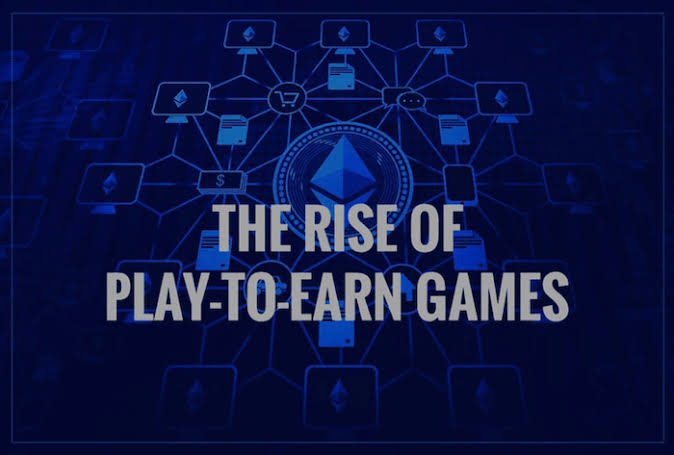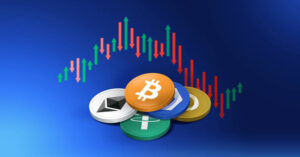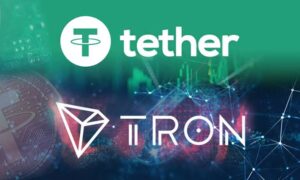
In recent years, the convergence of cryptocurrency and gaming has given rise to a revolutionary concept: Play-to-Earn (P2E). This model, which allows gamers to earn real-world value through in-game activities, is transforming the gaming landscape and creating new economic opportunities. Here’s a closer look at how the P2E model works, its impact on the gaming industry, and what the future holds.
What is the Play-to-Earn Model?
The Play-to-Earn model enables gamers to earn cryptocurrency or other digital assets by participating in games. Unlike traditional gaming, where players spend money without financial return, P2E rewards players for their time and effort, making gaming a potentially lucrative activity.
Key Features of Play-to-Earn:
– Token Rewards: Players earn in-game tokens or cryptocurrency through gameplay, which can be traded or sold for real-world value.
– Ownership of Digital Assets: Gamers can own, buy, and sell digital assets, such as characters, items, and land, as NFTs (Non-Fungible Tokens).
– Decentralized Economies: P2E games often have decentralized economies where players can participate in the market dynamics of the game.
How Play-to-Earn Works
1. Earning Mechanisms:
– In-Game Activities: Players earn tokens by completing missions, winning battles, or achieving milestones.
– Staking and Yield Farming: Some games offer staking mechanisms where players lock their tokens to earn rewards.
– Marketplace Transactions: Players can sell or trade their in-game assets on various marketplaces, earning crypto in return.
2. Blockchain Integration:
– Smart Contracts: These automate transactions and ensure transparency in the game’s economy.
– NFTs: Represent unique in-game assets that can be traded outside the game environment.
– Cryptocurrency Payments: Enable seamless exchange of value between players and the game ecosystem.
Popular Play-to-Earn Games
Several P2E games have gained significant traction, attracting millions of players and generating substantial economic activity:
– Axie Infinity: Players breed, raise, and battle creatures called Axies, earning tokens (AXS and SLP) that can be traded or used in the game.
– Decentraland: A virtual world where players can buy, sell, and build on virtual land, using the MANA token.
– The Sandbox: A virtual gaming world where players can create, own, and monetize gaming experiences using the SAND token and NFTs.
Impact on the Gaming Industry
1. Economic Empowerment:
P2E games provide new income streams, particularly in developing countries where earning potential from gaming can surpass traditional employment.
2. Enhanced Engagement:
Earning potential drives higher player engagement and retention. Players are more motivated to invest time and effort when there is a financial reward.
3. New Business Models:
Game developers are exploring decentralized funding models, reducing reliance on traditional publishers and opening opportunities for innovative game designs.
4. Digital Ownership:
Players gain true ownership of their digital assets, enhancing their gaming experience and enabling new forms of creativity and investment.
5. Community-Driven Development:
Decentralized governance allows players to have a say in the game’s development and economy, fostering a more engaged and loyal community.
Challenges and Considerations
1. Regulatory Uncertainty:
The integration of cryptocurrency in gaming raises regulatory questions, including issues of taxation, money laundering, and consumer protection.
2. Volatility:
The value of in-game tokens and assets can be highly volatile, affecting the stability of the game’s economy and player earnings.
3. Security Risks:
Blockchain-based games can be targets for hacking and fraud. Ensuring the security of smart contracts and player assets is critical.
4. Game Balance:
Maintaining a fair balance between earning potential and gameplay quality is essential to avoid “pay-to-win” scenarios that can alienate players.
5. Accessibility:
While P2E models offer new opportunities, the initial costs of acquiring in-game assets can be a barrier for new players.
Future of Play-to-Earn
The Play-to-Earn model is still in its early stages, but its potential is vast. Future developments could include:
– Interoperability:
Greater interoperability between different games and platforms, allowing assets to be used across multiple games.
– Regulatory Clarity: Clearer regulatory frameworks that support innovation while protecting players and investors.
– Mainstream Adoption: As the model matures, mainstream gaming companies may integrate P2E elements into their games, broadening the reach and acceptance of crypto gaming.
Conclusion
The rise of the Play-to-Earn model represents a significant shift in the gaming industry, blending entertainment with economic opportunity. By leveraging blockchain technology, P2E games offer a new way for players to monetize their gaming skills and creativity, transforming gaming from a leisure activity into a potential livelihood. As this model evolves, it promises to create a more inclusive and dynamic gaming ecosystem, where players are both participants and stakeholders in the digital economies they inhabit.






